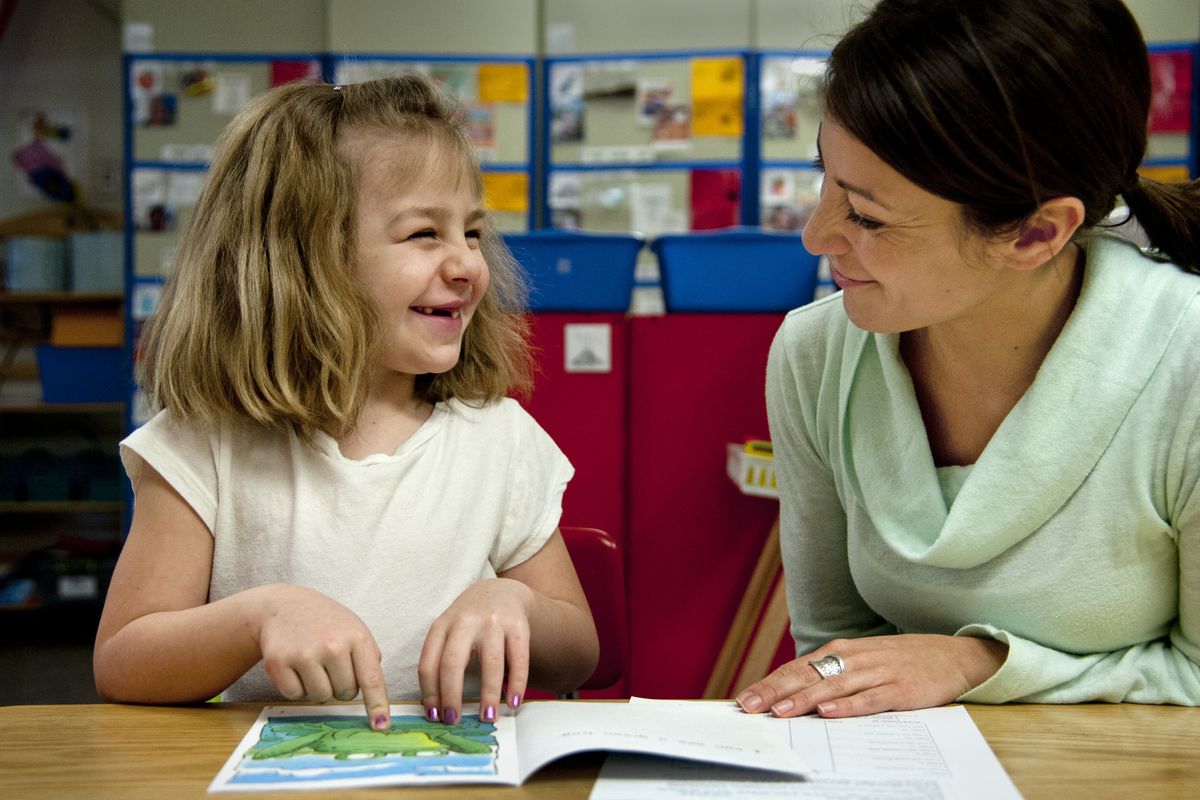Data helps teachers learn about kindergartners’ abilities
New assessment gives baseline for funding

Washington kindergartners are physically coordinated enough for their first year of school, but their ability to count to 20 and clearly express themselves are lagging, according to a new assessment released by the state.
Early-learning advocates suspected the state’s kindergartners were entering school less than fully prepared, especially low-income and minority students. Now there’s data to back up the theory.
“I think what’s exciting about this data is that we have it at all,” said Kathe Taylor, director of early learning assessment for the Office of the Superintendent of Public Instruction. “We have not had a common data set for kindergartners, ever.”
Kindergartners in 308 schools statewide – 208 of which had state-funded, full-day kindergartens – were assessed for seven weeks starting this fall in six categories: social emotional, physical, language, cognitive, literacy and math. Spokane Public Schools took part, as did the East Valley, West Valley and Cheney school districts.
The steps leading to the assessments began in 2009 when an education bill established Washington Kindergarten Inventory of Developing Skills, or WaKIDS. The Department of Early Learning, the Office of Superintendent of Public Instruction and Thrive by Five Washington worked together to develop assessments and ways to connect the kindergarten teachers with families and early-learning providers.
The first-of-its-kind assessment establishes a baseline for educators to use with lawmakers in negotiating funding.
The data “show that the opportunity gap is evident in the first few weeks of kindergarten,” according to the WaKIDS report to the Legislature. For example, while a state average of cognitive development was 71 percent, the percentages uncovered by the study ranged from 62 percent to 80 percent, depending on the racial group or gender.
The 1,003 teachers who participated began the assessments by meeting with each child’s parents and observing the child for seven weeks in the six categories.
Spokane Public Schools’ 15 schools with the highest poverty and full-day kindergarten took part in the assessment. The results showed the schools’ combined assessments were below the state averages in all six categories, but only by a few percentage points.
“For us, I don’t think it was real surprising where they were; they performed where we thought they would,” said Emily Sobczuk, a Holmes Elementary School kindergarten teacher. “Part of the reason it’s not shocking is because most of the schools (with state-funded full-day kindergarten) are low-income, so it’s not too surprising they are coming in unprepared.”
A commonality among many of those schools is a lack of pre-kindergarten care or education. Sobczuk guessed only about 35 percent of Holmes Elementary children attended preschool before entering kindergarten.
She added, “It is surprising that our 5-year-olds can’t count to 20, but that has been the trend for the years I’ve been working here. I think if I was at a school where the kids weren’t low-income, where the kids have strong foundations and are more likely to attend preschool, then it would be more surprising.”
Sobczuk, who has taught kindergarten at Holmes for 14 years, said the assessments helped the teachers learn about the children’s strengths and weaknesses.
“What we learned also helped us to focus on areas the kids needed to develop more. It was nice to see which kids came with the strengths, and which kids needed more help,” she said. “We could use that to pair kids to help each other with strengths, and we could use it to pair kids who we knew would work well together.”
Spokane Public Schools spokeswoman Terren Roloff said, “When you see students scoring low on those assessments, you see the importance of early learning in our community.”
The pre-kindergarten component is one reason Cheney School District officials think its kindergartners scored above the state average in all six areas.
“We have a committed preschool program in the district. It’s available to all children ages 3-5 taught by certificated teachers,” said Kristi Thurston, director of student support services. “We serve about 145 students in the preschool program right now.”
The preschool is tuition-based. It’s available on a sliding scale if the family qualifies for free or reduced-price lunch.
Another factor is a program called READY for Kindergarten. “It focuses on training for parents with children ages 0-5,” Thurston said. “We offer training sessions, and every parent gets to take home a toy that helps teach the child. The program has been in place for several years.”
Additionally, the district has an internal training component with an emphasis on early learning.
She added, “We are very proud of what we do in the district.”